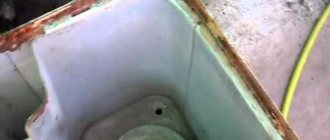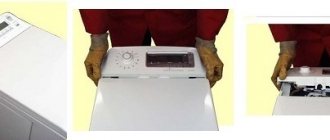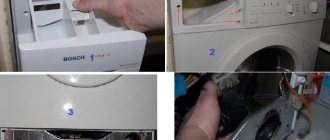Drinking a glass of fruit or vegetable juice is pleasant at any time of the year. but preparing it using a grater and then squeezing it out is not so easy. A considerable investment of effort and time is required. And an electric juicer handles this task almost instantly.
This compact device is easy to use and consumes negligible electricity. An hour of continuous operation of a juicer costs a few pennies.
Electric juicers are designed to extract juice from fresh fruits and vegetables by grinding the product and centrifuging. In addition, they are used for chopping and cutting fruits and vegetables into slices.
The following classification of electric juicers has been adopted in Russia (Table 1).
Electric juicers, depending on the additional operations performed and structural elements, are manufactured in four degrees of comfort (highest, first, second, third). Comfort elements include the following: • devices for grating raw vegetables, chopping and cutting vegetables, mixing liquids, chopping vegetables and fruits; • electric brake; • device for storing the connecting cord; • speed controller; • additional filter for better juice purification. Juicers have a permanent connecting cord 1.5 m long. The sound level for a device of the highest quality category should be no more than 72 dBA and for a device of the first quality category - no more than 74 dBA.
Technical characteristics of domestic electric juicers are given in table. 2.
Electric juicer “Juice”
Using a plastic nut, the mesh basket 4 and the grating disk 5 are installed and fixed. A plastic perforated tape 7 is placed in the mesh basket along its walls. The housing 3 of the juicer is installed on the housing 1 of the electric drive. To fix it on the electric drive housing there is a special protrusion. The juicer body is closed with a lid 6, which has a loading window for storing products. The lid is latched using a carrying handle set to a vertical position. Using switch 9, the electric motor rotates the mesh basket and the grating disk.
Products loaded through the loading window are fed by a pusher to the knives of the grating disc. The crushed products are thrown onto the walls of the basket under the influence of centrifugal force. The juice enters tray 3 through the holes in the belt and basket and flows into the prepared dishes.
When preparing the juicer for operation, it is necessary to install housing 3 so that the flats on the holes of the basket and disk coincide with the flats on the platform shaft. The grating disc and mesh basket are secured with a nut.
Disassembling the juicer
comes down to disassembling the electric drive. To do this, place the drive on the table, unscrew the four screws securing the bottom and remove it. Place a support under the output shaft of the drive (so as not to bend the shaft) and, using a bit or tube, knock out the pin securing the platform hub 8 to the shaft. Remove the platform. Unscrew the screw of the clamp securing the power cord to the drive housing. Remove the two screws securing the switch. Remove the four screws securing the electric motor to the housing. Remove the electric motor from the housing along with the switch and cord. To disassemble the engine, unscrew the four nuts that secure the front shield, stator package and rear shield using studs. Disconnect the switch and connecting cord. Replace the faulty part or assembly.
Reassemble in reverse order. While doing this, lubricate the bearings by placing a few drops of mineral oil into each bearing.
If the juicer does not turn on, check the serviceability of the cord, switch, and electric motor windings. If the electric motor hums, but the shaft does not rotate, check to see if the rotor is stuck. If necessary, ensure free rotation of the rotor by loosening the tie of the stator package and then securing it. Check the condition of the bearings and add grease. If there is strong vibration, check the quality of assembly of all parts, as well as the reliability of fastening the grating disk and basket to the platform shaft.
Electric squeezer “Zhuravushka-2” SVSP-301.
The juice is obtained by grinding the product with a grating disk and centrifugation. The pulp is periodically removed by bringing the blades of the ejector mechanism to the inner surface of the rotating centrifuge.
Device design
Zhuravinka juicers are produced by a Belarusian manufacturer in accordance with GOST standards, which ensures their excellent performance over many years of operation. After production, special test tests are carried out, which eliminates the possibility of defective equipment.
The device is universal, allows you to obtain juice from any fruit or berries, and is suitable for processing tomatoes. Vegetables or fruits are crushed inside the device to a mushy puree using a disc grater. Next, pure juice is squeezed out of the resulting mixture in a centrifuge, which is similar to the operation of an apple juicer.
The equipment consists of several components:
- engine;
- plastic case;
- electrical cord;
- juice container (volume 0.5 liters);
- metal disk;
- plastic pusher;
- container for pulp (volume 1 liter);
- tray;
- sieve filter;
- covers;
- clamps for tightly closing the lid.
Additionally, the kit includes discs that can be used for fine or coarse chopping of fruits.
2 Design, principle of operation and equipment of the juicer
Before you buy a Belarusian Zhuravinka juicer, it is useful to familiarize yourself with its structure and equipment, since some models are equipped with such additions as a shredder and automatic pulp discharge.
The Belarusian juicer consists of the following main parts:
- Plastic case.
- Power cord.
- Engine.
- Metal disk.
- A sieve filter like a universal juicer.
- Lid.
- Clamps holding the cover to the body.
- Tray.
- Plastic pusher.
- 1 liter pulp container.
- Juice container with a capacity of 0.5 l.
Juicer with shredder Zhuravinka is additionally equipped with discs for fine and coarse shredding. When purchasing, pay attention to the presence of a shredder if you need it.
The Zhuravinka juicer is universal. This means that it can be used to process any vegetable or fruit product. Fruits or berries inside the device are crushed to a mushy state using a disk grater. Next, the juice is separated from this mixture in a centrifuge, like in an apple juicer.
As a result of squeezing, a lot of pulp is obtained, which is dumped into a separate container. Thanks to this versatility, it is possible to get by with one unit for all cases of juice production. You won't need a separate tomato juicer. The crane will do an excellent job of obtaining tomato juice.
2.1 Main models
There are various models of the Zhuravinka juicer, each of which differs from other varieties very slightly. Most models do not have automatic pulp reset. This allows you to extract the juice as efficiently as possible.
However, there is a downside to this. If the sieve becomes clogged, you have to disassemble the device and clean the mesh. Some Zhuravinka models are equipped with a device for automatic waste disposal. They are perfect for those who do not like breaks during work.
The Zhuravinka SVSP 301 juice extractor is not equipped with shredding discs and is intended only for squeezing juice. This also affects its cost. If you only need a unit for juice, then there is no need to overpay for a shredder.
The Zhuravinka 301 m juicer has the same configuration. But the SVSP-301P juicer-press model has more power - 160 W. The SVSP-303 crane also does not have a shredder, but its power is already 350 W.
Specifications
Before assembling the Zhuravinka juicer according to the instructions, it is recommended that you familiarize yourself with its technical characteristics:
- device power consumption is 120 W. Peak engine power of new models is 300 Watt;
- productivity - 25 kg per hour / 400 ml of juice per minute, which directly depends on the rotation speed of 50 Hz;
- continuous operation time is 1 hour, after which it is recommended to disconnect the equipment from the power supply. This is necessary for cooling the parts and mechanisms of the device;
- The weight of the juicer is 5.5 kg, the device is easy to transport;
- The compact dimensions of the product – 25 x 30 x 20 cm – are convenient for storage.
Advantages and disadvantages
Like any electrical device, “Zhuravinka” has pros and cons, the list of which was compiled according to consumer reviews:
- Compact dimensions and low weight make the unit easy to transport and store.
- The reliable electric motor has low power. It is practically not subject to overheating and breakdowns for more than 10 years.
- Impact-resistant plastic is not afraid of falls and mechanical impact. However, processing raw materials with coloring pigments can give the device a different shade. You can get rid of it only after processing.
- The mouth for serving fruit has a limited size. Therefore, before starting work, they will need to be crushed.
- Models with automatic pulp removal simplify work and speed up crop processing.
- Different equipment differs radically in price. Depending on the needs of the consumer, you can buy a simpler and cheaper model or give preference to the maximum configuration for a lot of money.
- This device is perfect for both domestic use and industrial needs.
- The disadvantages include the high noise level of the unit. But this is fully compensated by its reliability.
Advantages and disadvantages
The crane, like other household appliances, has strengths and weaknesses. Among the advantages:
- Long service life due to high level of technical performance.
- Impact-resistant housing that ensures the device’s resistance to various environmental factors.
- Compact, light, easy to use.
- Zhuravinka belongs to the middle price segment of juicers, which makes it accessible to a wide range of consumers.
The disadvantages include a high level of noise and vibration during operation of the device, a narrow neck for serving fruit, which creates additional inconvenience - large fruits will have to be pre-cut into small pieces.
Video
The Belarusian-made juicer Zhuravinka, like other electric juicers, is a universal device that can extract juice from any vegetable and fruit products in a very short time. Moreover, the hardness of the product may vary. In addition, some models are equipped with a removable shredder, expanding the capabilities of this wonderful device.
Practicality, reliability and high productivity have made this device indispensable for mass processing of gifts from gardens and vegetable gardens. High quality and low cost made the device popular among the population.
Many gardeners do not know where to buy a Zhuravinka juicer. There are practically no manual auger juicers in stores, so the most realistic option is to purchase them online.
Equipment
A complete set of equipment includes:
- assembled juicers;
- juice containers;
- pusher;
- tray;
- spare clamp;
- containers for waste.
In addition to all the components, the equipment set must include a description and instructions for the Zhuravinka juicer, and cardboard packaging.
Electrical circuit of the juicer
The electrical circuits of most types of juicers are fundamentally no different. Only an electronic operating mode control unit can be added.
The supply voltage is supplied through a C6 type plug using a flexible cord. Capacitor C1 serves to suppress noise emitted by the motor brush assembly. Resistor R1 serves to discharge capacitor C1 after disconnecting the plug from the socket to prevent electric shock to a person when touching the pins of the plug. These elements may not be available in budget juicer models.
The selection of operating modes of the juicer is carried out using switch S1. In the position shown in the diagram, the juicer is turned off. When the switch knob is moved one position to the right, its movable contact closes pins 1-2 and the supply voltage through the rectifier diode VD1 is supplied to the electric motor, indicated in the diagram by the letter M. The diode does not pass half of the alternating current sinusoid and thus the speed of rotation of the grater sieve is reduced twice.
When you move the engine one more step, contacts 1-2-3 close, and all the mains voltage is supplied to the motor winding, and the juicer operates at full power.
The limit switch Sbl serves to exclude the possibility of turning on the juicer when the top cover is removed and performs the task of protecting a person from injury. It is mechanically connected to the cover, and if it is not installed, the switch is open.
To reduce wear on the brush-commutator assembly of the engine and suppress radio interference, spark-extinguishing capacitors C2-C3 are used. Often, to better suppress radio interference, inductors (chokes) are also installed in the open circuit of the motor power supply.
To protect the engine from overheating during long-term operation (more than 15 minutes), a thermal protection element St is used, which opens the supply voltage supply circuit.
A connection indicator can also be installed in the circuit. Usually this is a miniature neon light bulb connected through a resistor to the supply voltage wires.
Tips for use and care
Instructions for use and application of the Zhuravinka electric juicer require that you prepare it before starting to operate the equipment. The device is checked for correct assembly - a test run with instant shutdown. If the disc sticks or rubs against the plastic, this indicates an incorrect connection of the elements.
Detailed information on how to assemble the Zhuravinka juicer is contained in the instructions. A sieve and disk are installed on the body. After this, the clamps are tightened and the lid is latched. In the process you need to adhere to certain recommendations:
- At the bottom of the juicer body there are bosses, which during assembly must fit completely into the recesses of the electric drive.
- The sieve and disk are installed in such a way that the sprocket aligns with the mark on the electric drive disk.
- The clamp is tightened all the way by hand, but it is strictly forbidden to use excessive force.
- The cover is fastened to the electric drive using locks.
Instructions for Belarusian juice extractors Zhuravinka recommends placing the equipment on a flat and hard surface before starting work. Suitable containers with a height of no more than 8 centimeters should be installed under the gutters for releasing juice and pulp (you can use factory containers). Before starting the device, the raw materials are prepared: fruits or vegetables are thoroughly washed and cut into pieces smaller than the neck itself.
The operating procedure is simple:
- The device is connected to an electrical network with a voltage of no more than 220 V. To save electrical energy, it is recommended to exclude the possibility of idle operation of the equipment, therefore products for processing are prepared in advance and in full.
- After starting the electric juicer, fruits or berries are evenly placed: using a pusher, they need to be pushed through a narrow neck to the disc. It is prohibited to apply excessive force; this may cause increased vibration and engine stalling.
- To remove the pulp, make several smooth turns of the ejector handle (it is located on the lid).
After processing 300-400 g of food, the juicer should be left idling for 10-15 seconds, which will ensure better juice extraction in the future.
During operation of the equipment, you need to monitor the condition of the sieve - the holes should not become clogged. To clean, this element is simply washed under running water. If soft fruits that have been previously stored for a long period of time are used, the sieve is cleaned after processing each 200 gram portion.
Planting and growing potatoes of the Zhuravinka variety
To obtain the maximum potato yield, it is necessary to take into account all the nuances of planting potatoes and further caring for them.
Preparing for landing
Before planting, all seed material undergoes careful selection. The tubers are selected to be medium in size, approximately the size of a chicken egg. Too small ones will not produce a normal harvest, and large ones will rot in the ground. Units with signs of disease, rot, traces of pests or mechanical damage are subject to culling.
A month before planting, the seed material is treated using a solution of potassium permanganate (10 crystals of potassium permanganate are taken for each liter of liquid). After drying, it is placed in boxes (in one layer) and sent to a room with free access to light and a temperature of 10 ° C to 15 ° C. After a couple of weeks, sprouts will form from the eyes. When they reach a size of 10-12 cm, planting work can begin.
Soil requirements
The best place for a potato field is a sunny area with shallow groundwater. The soil must be fertile with a high level of breathability. Potatoes are not planted in low rows; in this case, excess moisture may accumulate.
When planting, it is necessary to comply with the requirements for crop rotation of cultivated plants. Too wet soil will result in the loss of all plants, while hard and dry soil will result in the loss of half the crop.
Dates, scheme and rules of planting
Planting begins after weather conditions have stabilized and the air temperature has increased from 16 °C to 18 °C, and the soil temperature to 10-12 °C. The planting schedule, as described by experienced gardeners, depends on the region:
- in the northern regions - 1st decade of May;
- in the central zone - late April or early May;
- in the south of the country - mid-April.
Potatoes must be planted according to a certain algorithm:
Dig a hole 15 to 20 cm deep
The distance between the rows should be at least 70 cm, between the bushes - 30 cm. A handful of onion peels and wood ash are thrown into the bottom of each hole. The seed material is placed with the sprouts facing up with the utmost care so as not to damage them. The holes are sprinkled without additional compaction of the soil, since air must flow to the roots. In clay soil, seeds are sent 7 cm deep, in light soil - 10 cm deep. If the scheme is followed correctly, the Zhuravinka potato sprouts almost simultaneously and begins to grow actively
If the scheme is followed correctly, the Zhuravinka potato sprouts and begins to grow actively at almost the same time.
Planting potatoes in holes should follow a certain pattern.
Disassembly stages
No matter how reliable a thing is, it can fail over time. The reason for this may be overload during operation, contamination, leakage of various liquids onto electrical parts, which can lead to a short circuit and breakdown.
To carry out repairs, we need to get to the compartment with the electric motor, which is located at the bottom of the Zhuravinka juicer, so we need to start disassembling it from the top (more about the internal design - the structure and principle of operation of a modern juicer). But even after removing from it all the removable parts involved in grinding vegetables, you will no longer see any latches or fasteners that allow you to disassemble the engine compartment.
However, this is only an appearance: in fact, there are no special difficulties here. All screws securing the lid are hidden under a plastic disk, to which a metal grater was screwed for grinding food. It just “sits” very tightly on the motor shaft and to remove it, you need to make a lot of effort.
To do this, you need to place the juicer on the floor and, holding it with your feet or with outside help, carefully pull the plastic disk off the shaft with your hands, trying to avoid large bends. You may not succeed the first time, but you should keep trying. The main thing is not to overdo it and not break anything.
Under the disk you will find four screws, unscrewing which you will divide the juicer body into two parts and gain access to all its insides and, perhaps, guess the cause of the malfunction.
Knowledge about the internal structure can be useful to you when creating a homemade juicer.
Description of the variety, origin and development
Zhuravinka is a mid-late variety of table potatoes.
Russian and Belarusian breeders worked on developing the variety. In 2005, the variety was included in the State Register of Russia. The patent was issued by the Belarusian Republican Unitary Enterprise NPC NAS.
Chemical composition, trace elements and vitamins
The energy value of potatoes per 100 g is 73 kcal.
Nutritional value per 100 g:
- water – 80 g;
- proteins – 1.9 g;
- fats – 0.1 g;
- carbohydrates – 16.6 g;
Potatoes contain 19% starch.
Chemical composition per 100 g:
- vitamin B1 – 0.08 mg;
- vitamin B2 – 0.03 mg;
- vitamin B3 – 1.1 mg;
- vitamin B6 – 0.24 mg;
- vitamin B9 – 16.5 mcg;
- vitamin C – 11 mg;
- calcium – 11 mg;
- magnesium – 22 mg;
- phosphorus – 59 mg;
- potassium – 426 mg;
- lutein – 13 mcg;
Tubers contain amino acids and saturated fatty acids. The vegetable contains small amounts of monounsaturated and polyunsaturated fatty acids.
Ripening time and yield
Zhuravinka potatoes ripen 100-110 days after emergence. In warm regions, the vegetable may ripen in 90 days.
From 1 hectare they get 500-600 centners of potatoes, sometimes the figure reaches 700 centners.
Gardeners who own small plots harvest 7-8 kg of potatoes from 1 m² of plantings.
Disease resistance
The variety has strong immunity to golden nematode and potato cancer. Resistant to scab, blackleg and late blight of tubers. But Zhuravinka’s resistance to rhizoctonia and late blight of the ground part is low.
Characteristics of tubers, description of appearance
Features of tubers:
- oval-round or rounded shape;
- the surface of the tuber is smooth or embossed, covered with a kind of mesh;
- the peel is reddish, the flesh is light yellow;
- the eyes are small, evenly distributed over the surface;
- weight 120-180 g, but there are large specimens up to 300 g;
Potato bushes up to 50 cm high. Stems 0.6-1 cm thick. Leaves are round, dark green, the central vein is darker, the edges are wavy.
The inflorescences are small in size and consist of 6-7 flowers of a reddish-violet or violet hue. Berries appear rarely.
Region for cultivation
The variety is recommended for cultivation in the North-Western, Central and Volga-Vyatka regions. Summer residents also cultivate it in other regions - from the Vologda region to the Perm region.
Repair features
Self-repair of all types of juicers, including the Zhuravinka, comes down to replacing failed parts, such as wires, switch, bearings or electrical plug. But most often, you just need to clean the engine compartment (and the engine itself) from debris that has gotten into it during operation: dust, juice, cake, etc. You may also need to lubricate moving parts.
But if the winding of the electric motor has burned out and it does not work when there is voltage at the terminals (this can be found out using an electrical tester), then you cannot do without the help of a specialist.
Rewinding a winding requires not only knowledge of electromechanics, but also the availability of special tools and consumables.
Diseases and pests
Crane is resistant to common scab and viruses X, M and S. This potato is resistant to blackleg disease, potato nematode and the common prototype of cancer.
The plant may be affected by late blight. This disease is caused by protozoan microorganisms that develop in a humid environment. The tops are affected to a greater extent, and the root system and tubers to a lesser extent. But in general, this variety is more resistant to late blight than many others.
The most common pest is the Colorado potato beetle, the larvae of which develop on the leaves of the tops and quickly destroy them. Also, mole crickets, wireworms, potato moths, cicadas, cutworms and aphids can pose a danger to plantings. You will find detailed materials about each of these pests on our website.
Crane is becoming more and more popular every year due to its unpretentiousness and high taste. These potatoes are not difficult to grow; with optimal watering, they guarantee high yields.
Which type of juicer is more suitable for large volumes?
Any type of juicer is suitable for preparing several glasses of juice. Using a screw device, with a certain number of fruits, you can make more drink, but it will turn out with pulp. When squeezing juice from soft fruits with this machine, you will most likely end up with a puree. Centrifugal juicers produce less juice, but they work faster, which is preferable for large volumes.
SVSP301P
SVSP301P “Zhuravinka” is a juicer that is characterized by increased productivity (no less than 0.55 kg/min), and therefore high power and electricity consumption (no more than 0.16 kW/hour). The finished juice, which is obtained after processing the fruit, corresponds to a level of 90-95% (pulp content). However, when working with soft and overripe fruits, this indicator deteriorates somewhat. The models are equipped with a manual release of the cake, which allows you to squeeze it really dry.
Juice press
Devices of this type can additionally be equipped with a fruit chopper or, if this is not provided for by the design, the apples will need to be chopped first. In any case, this is a good alternative to electric fruit processing devices. Using a mechanical press is very simple. Chopped apples are placed in a collection bag and placed under a press, under which a drainage system is installed to release the juice into the prepared tank.
Of course, it will take more time to prepare juice from apples in this way compared to an electric juicer. But the press has positive aspects that make it popular with many gardeners.
- Simplicity, and hence the reliability of the design.
- Savings both on the purchase of the device and during its operation.
- By processing an equal volume of apples using a centrifugal juicer and press, different volumes of juice are obtained. The winner will be a mechanical press.
- The resulting juice retains a greater amount of vitamins and nutrients.
- With the proper skills, you can make an apple press yourself.
If you want to automate the process of extracting juice, then you need to consider electric juicers, which also have their advantages.
Equipment care
The manual (guide) for using the Zhuravinka juicer clearly states that the acceptable temperature for its operation is limited to the range from +5 to +35°C. After transportation in the cold season, it is necessary to allow the device to stand in a warm room for about 2 hours before use. Before starting use, the instructions advise manually making several revolutions of the motor pin with the grid and disk attached in order to detect extraneous sounds and grinding parts. Then you can do a test run. After use, the product must be disassembled: the same instructions explain in detail how to disassemble the Zhuravinka juicer:
- To ensure complete safety, the unit is completely de-energized by removing the plug from the socket.
- Unfasten the side latches, freeing the cover from the body.
- Remove the cover.
- Unscrew the inner plastic holder and remove the filter mesh along with the grater (nozzles).
- Disconnect the plastic bowl with the juice chute.
After disassembly is completed, all removable elements must be washed under warm running water. To completely clean the grinding discs, use a stiff brush. If there is a residue of coloring pigments on plastic parts, they should be immediately wiped with a damp cloth and baking soda. It won't be possible to wash it off later. The body of the juicer should be wiped with a cloth soaked in soapy water, then polished dry. After everything is washed and dried, the parts (elements of the basic assembly), assembled together, are placed in storage. If the juicer body is equipped with a special holder for the electrical wire, it is twisted and hidden until further use.










